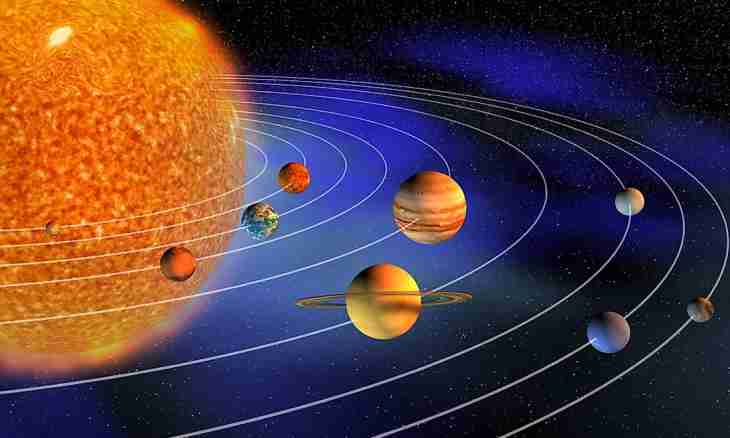Each planet is the whole individual world, mysterious and such unique. Development of astronomy and an active research of space allows to get into the intimate mysteries of space.
Solar system
According to a scientific hypothesis, our system was formed of a gas-and-dust dark cloud 4.6 billion years ago. As a result of powerful transformations the cloud turned into a young system with the central yellow star, planets, asteroids and various space bodies.
Structure of the Solar system
Our system includes a star of average brightness - the Sun, and 8 classical planets which address around it on elliptic orbits at various distance. It is remarkable that up to 2006 9 planets in a system were registered, Pluto was the last. However owing to new opening the reclassification of Pluto was carried out, and as a result it acquired the status of the dwarf planet along with Ceres, Erida and other similar objects.
By the way, Pluto has the satellite Charon who half is less than planet dwarf. Further reclassification of Pluto to the double planet, however not enough received data on the structure of space for such classification is considered today.
Internal and external planets are divided by a belt of asteroids.
What is internal planets
Planets of a system are divided into small warm (internal) and cold gas supergiants (external). Mercury, Venus, Mars and Earth belong to the first type. To external - Yuriter, Saturn, Uranium, the Neptune. Internal planets have a firm kernel and consist of metals, gases (oxygen, hydrogen and others), silicon and other heavy elements. The largest - Earth and Venus with sizes of 1 and 0.81 respectively. The earth and Mars have natural satellites. In particular, at the "blue" planet - the Moon, at "red" - Phobos and Deymos that is translated as "fear" and "horror". Such name of satellites of Mars is connected with the fact that an object was called in honor of the god of war of Mars (he is Ares).
Internal planets considerably concede in the sizes to gas giants.
Internal and external planets are divided by a wide belt of asteroids which stretches between Mars and Jupiter. Unlike gas giants, firm planets have no rings consisting of asteroid fragments, gas and dust. The most minor gas planet Uranium by 14 times surpasses the largest "warm" planet - Earth. In the scientific world it is considered that on similar to Earth planets possibility or presence of life are higher, than on gas giants. In many respects because of favorable climate and the internal structure of such planets. In this regard special attention of astronomers and scientists is paid to search of such space objects.

